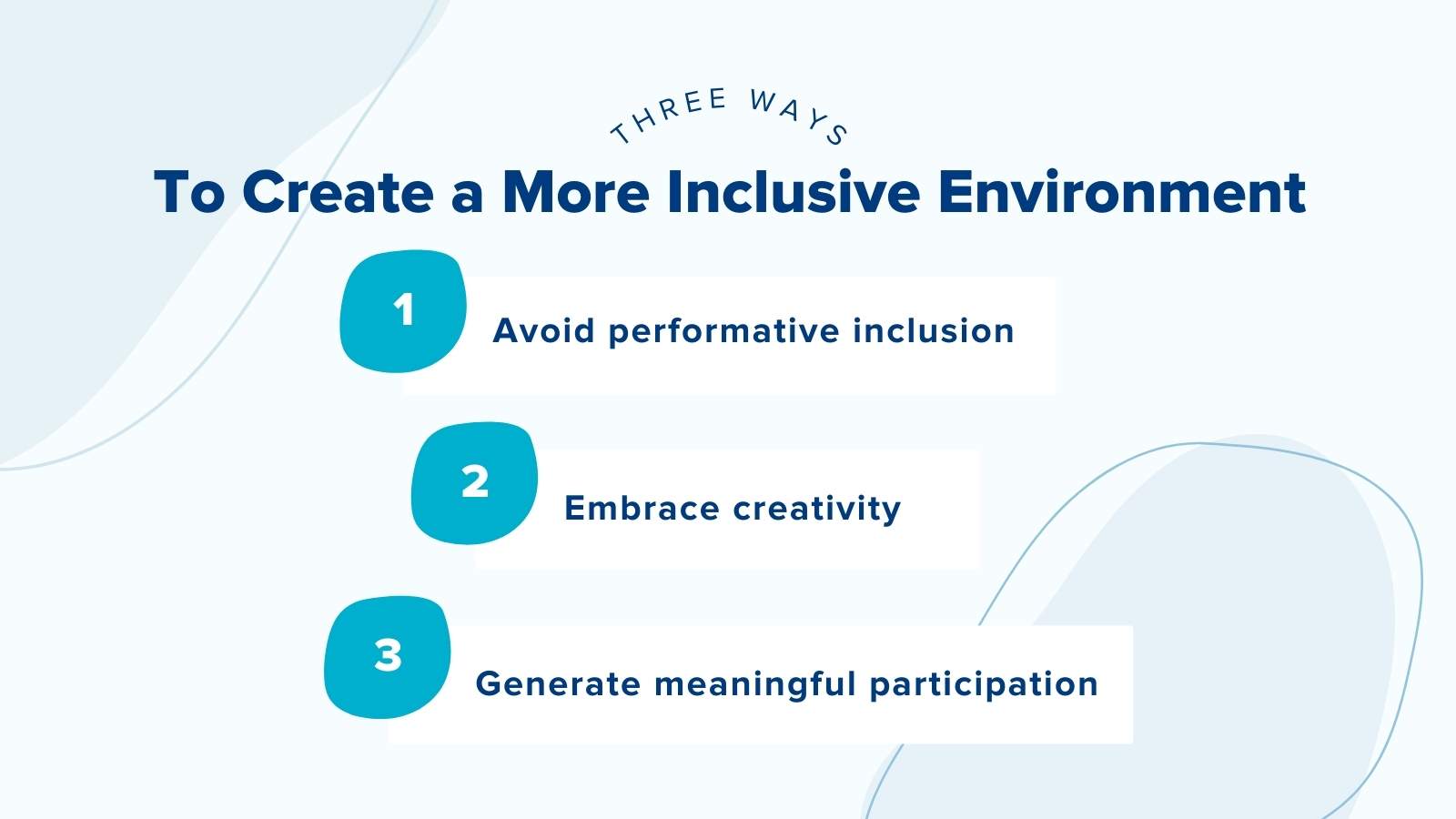Three Ways to Create a More Inclusive Environment
Most organizations claim or aspire to be diverse, but in 2022 it’s not enough to just have different types of people in your ranks. Diversity allows people to be invited to the party, but inclusivity allows them to have a seat at the table. Springtide’s research with members of Gen Z shows that to be inclusive is to be supportive, welcoming, and respectful—and to have meaningful participation. Inclusion is imperative for Gen Z, and they tend to favor spaces and organizations that have also chosen to make it essential. Seventy-two percent of young people we surveyed say it’s important for an organization they join to create spaces where everyone is safe, welcome, and has equal access to resources. Nearly 40% said they’ll join an organization only if inclusion is a top priority.
Creating an inclusive environment takes intention and planning. Here are three ways to help ensure that your organization is one where young people want to be:
- Take steps to avoid performative inclusion. Our research led us to Peter, who was accepted to an Ivy League institution as a first-generation college student. His excitement quickly waned as he realized that although he had gotten in the door, he was very different from the majority of his classmates. Because no structural supports were in place, Peter was left to navigate class and culture issues on his own, while trying to keep up with the demands of undergraduate life. A commitment to diversity without structures in place to help welcome, support, and recognize the challenges that come with it is not inclusion. It’s tokenism. A first step in creating an inclusive environment is to talk to those like Peter, who may not feel welcomed or supported, and see where the organization may be falling short. Then, be responsive to what you hear and make changes.
- Embrace creativity as a path for inclusion. Music, dance, art are elements known to unite people across time, space, and difference. The arts are inherently inclusive in many ways and provide an opportunity for those in your organization to experience how others see the world. Even if your organization is not an arts organization, you can incorporate the arts and creative activities while keeping your organization’s identity intact. Ask your members how they envision bringing creative offerings into the environment, and then incorporate them.
- Generate meaningful participation. An inclusive environment is not one in which some are always in the game and others remain on the sideline. Inclusion means being welcomed and then invited to contribute in a way that creates meaning and value for everyone. If an organization refuses to embrace or show respect for those who seem to not conform or who may be on the margins, young people will opt out. Think through how your organization can broaden opportunities for participation, especially for those who aren’t currently showing up. What might be the barriers that keep them from engaging fully, and what can you do to remove those barriers?
To be inclusive is to be welcoming, supportive, and respectful. And full, meaningful participation—no matter an organization’s activities—is integral to the way welcome, support, and respect are communicated. When you do whatever it takes to embrace inclusivity, young people will do whatever it takes to ensure that the environment remains that way.







